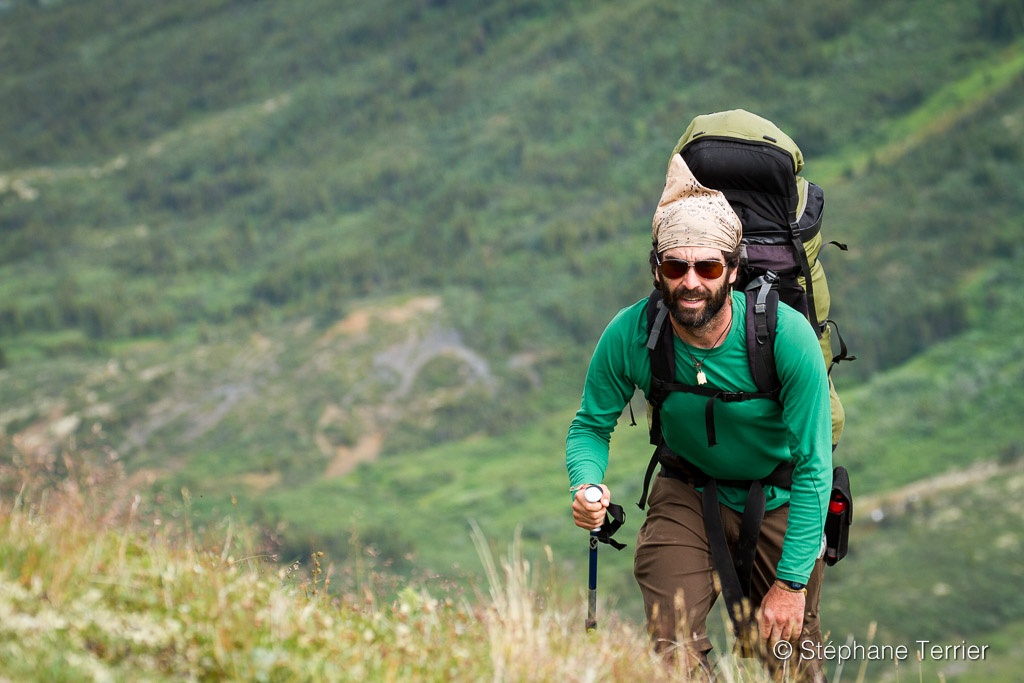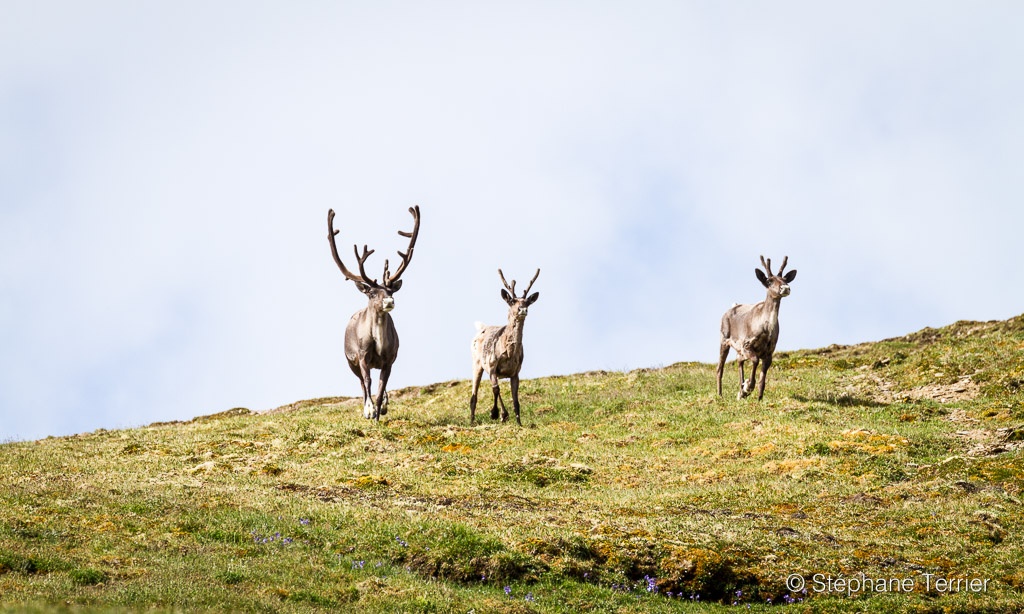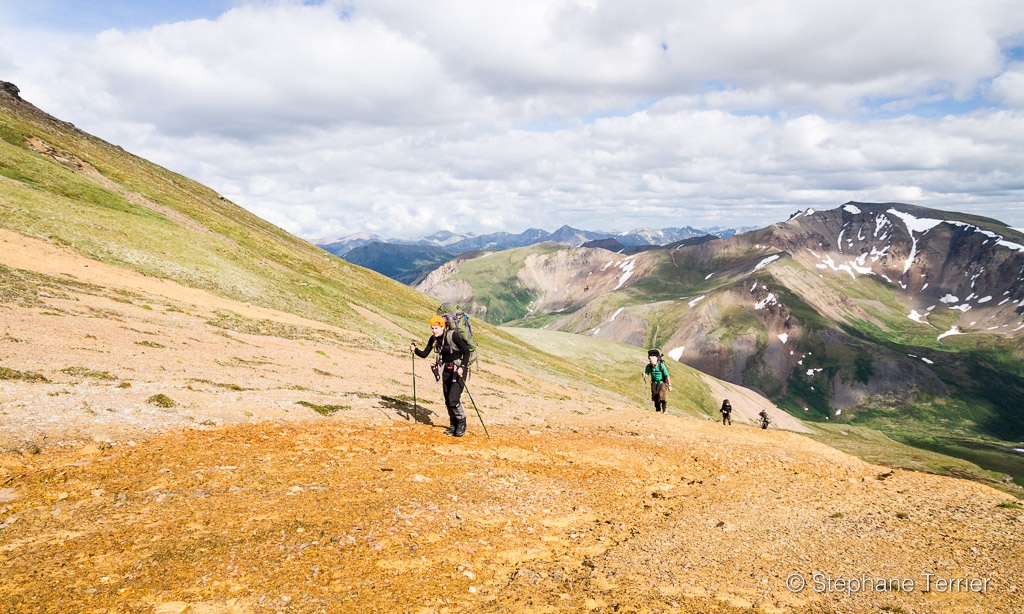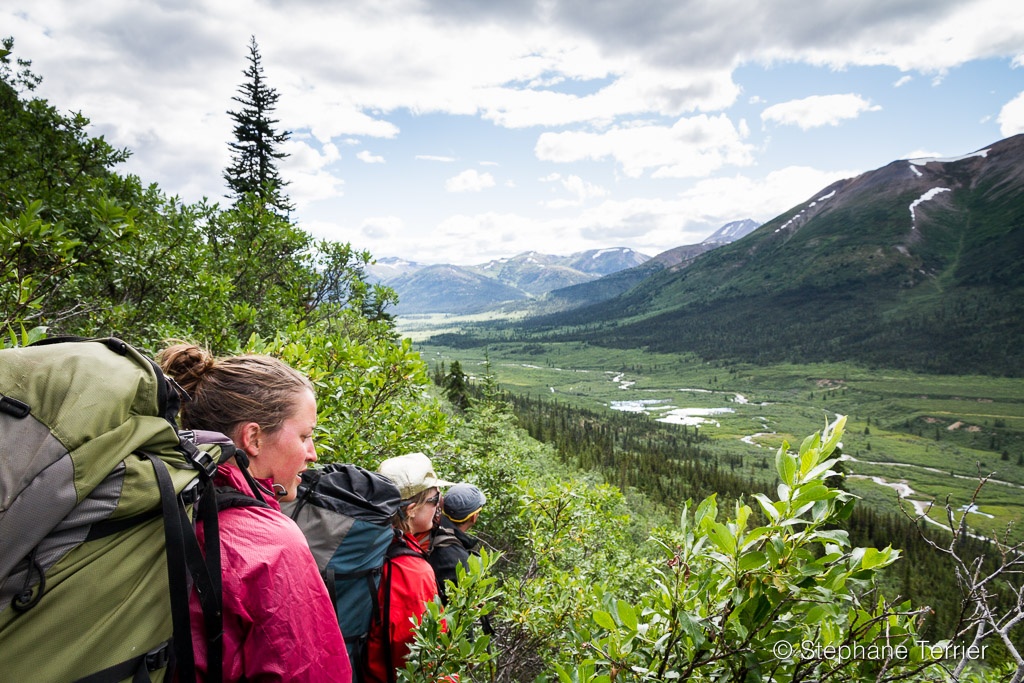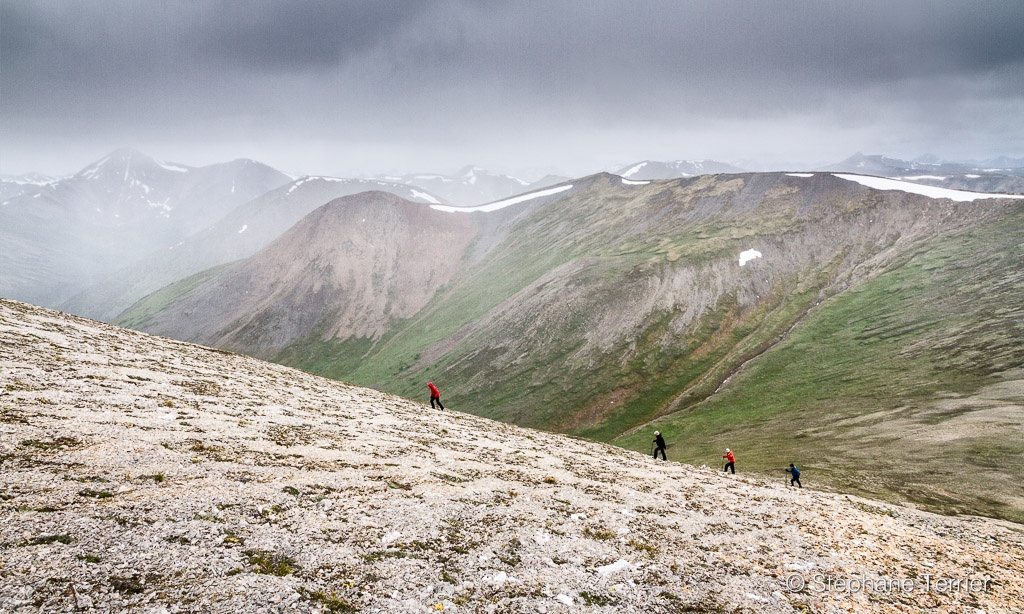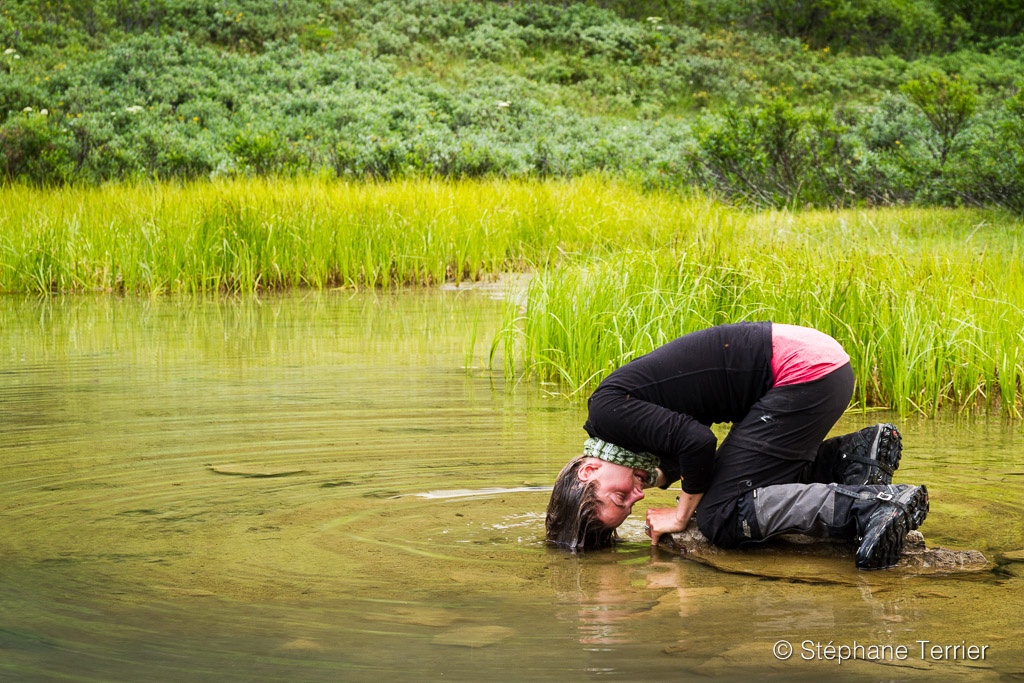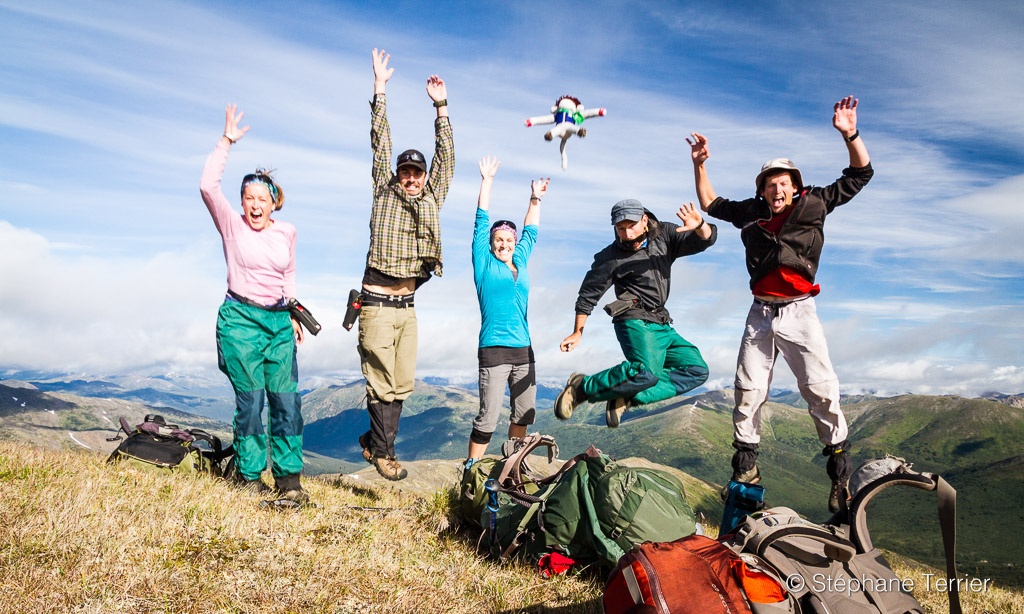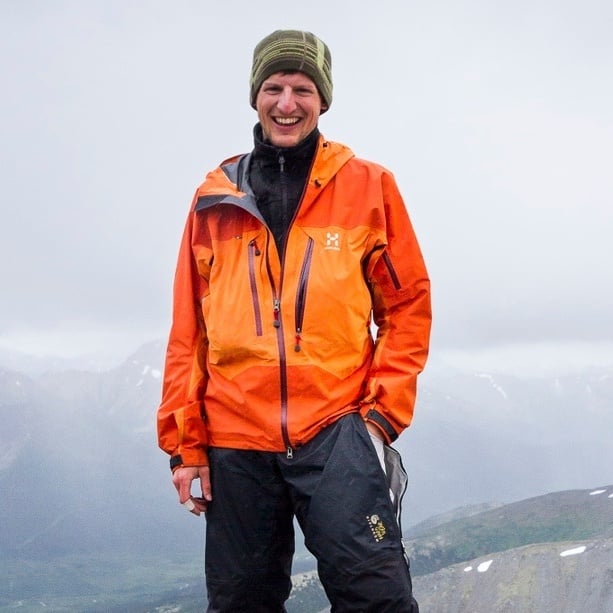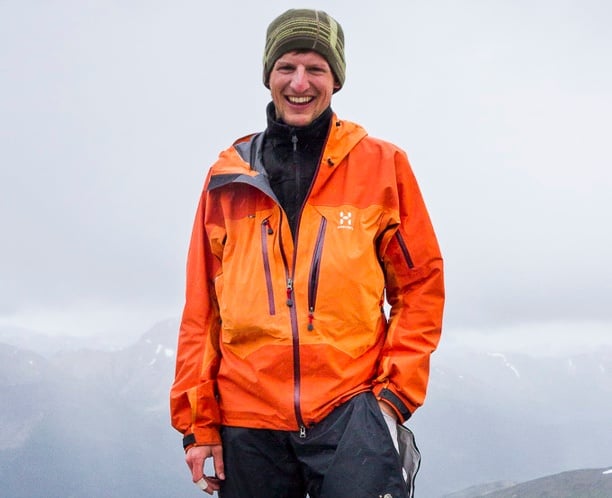After his first NOLS experience, engineering PhD candidate Stéphane Terrier of Lausanne, Switzerland, was eager to go back into the field for more.
Stéphane had already built a relationship with NOLS thanks to the stunning photos he submitted after his first course, so we were thrilled to hear he had enrolled on a Yukon Outdoor Educator course.
Once again, Stéphane pulled out his camera to document the fifteen-day hiking section in the Pelly Mountains and the thirteen-day paddling section, on which he and his group travelled through Class III rapids on Seagull Creek, McConnell River and Nisutlin River in canoes, covering roughly 155 kilometers.
Enjoy Stéphane’s photos and commentary on the course—you are in for a treat.
We started the course with the two-week-long hiking section. During the first week, the route crossed many valleys, which meant a lot of going up and downhill.
One day we saw a few caribou far away on the pass where we were heading. But we had to stop for an hour to make sure the third group was ok, so I wasn’t sure if the caribou would still be there. Hoping it was the case, I was ready when we got close. And they hadn’t moved! They were at least as interested in us as we were in them. Being close to these wild animals was an amazing experience.
My group arrived at the “Caribou Pass” after watching the caribou for about 10 minutes. The Pelly Mountains are rich in minerals with some colorful rocks. We saw many traces and impacts of geological exploration. The biggest were the tracks made for the drilling machines and vehicles. They will stay visible for centuries…
Our hiking route made us cross the McConnell River (the basin visible in the background) near its source. To go down to the river, we had to descend some steep slopes and carefully manage the risks while choosing the route. Later in the course, we canoed the second half of the McConnell River.

The meeting point for our three groups at the end of this day was on the McConnell River. Coming down from the alpine tundra, we faced thick bushwhacking. At least when going downhill, it’s possible to use all our body and pack weight to force our way through.
The day I was the LOD (Leader of the Day), I decided to stay high and follow ridges instead of valleys. It might have been initially more strenuous to climb, but afterwards the ground was easy going and the views were breathtaking. Here, we dropped our backpacks to ascend a summit offering a nice view on the valley of Seagull Creek.
During our first day of traveling without instructors (Independent Student Group Travel, or ISGT), we passed this beautiful alpine lake on a pass. Jayme couldn’t resist washing her hair while another student went for a swim.
For our second and third day of ISGT, we were divided into three groups and totally independent from instructors. My group chose a high route, following ridges most of the day. Here we were having fun on our second summit of the day. We were lucky with the weather, as it snowed the next day.
At the end of the hiking section, we traded our backpacks for canoeing gear. The conditions didn’t allow the truck to take the canoes down to the river, so an epic portage from a mountain pass began!
We had to carry them for six kilometers, losing 500 meters (about 1,600 feet) of elevation on the way. The heaviest canoes were 35 kg (76 lbs), and we were only able to carry them for two or three minutes before switching the carrier...
See Stéphane's course, Yukon Outdoor Educator.
Read what happens next on the canoeing section in Part 2 of this post!
Post written in collaboration with Alex Phillips.
Written By
Stéphane Terrier
Stéphane Terrier is a four-time NOLS alumni from Switzerland, having taken his courses in Alaska and the Yukon. He recently finished a PhD at the Swiss Federal Institute of Technology in Lausanne (EPFL) and is now working as a civil engineer. During his free time, he seeks adventure while hiking, climbing and skiing in the Alps. An avid photographer, many of Stéphane’s course photos have been published in NOLS publications. Follow his adventures on Instagram, @stephaneterrier and his website, sterrier.com.

